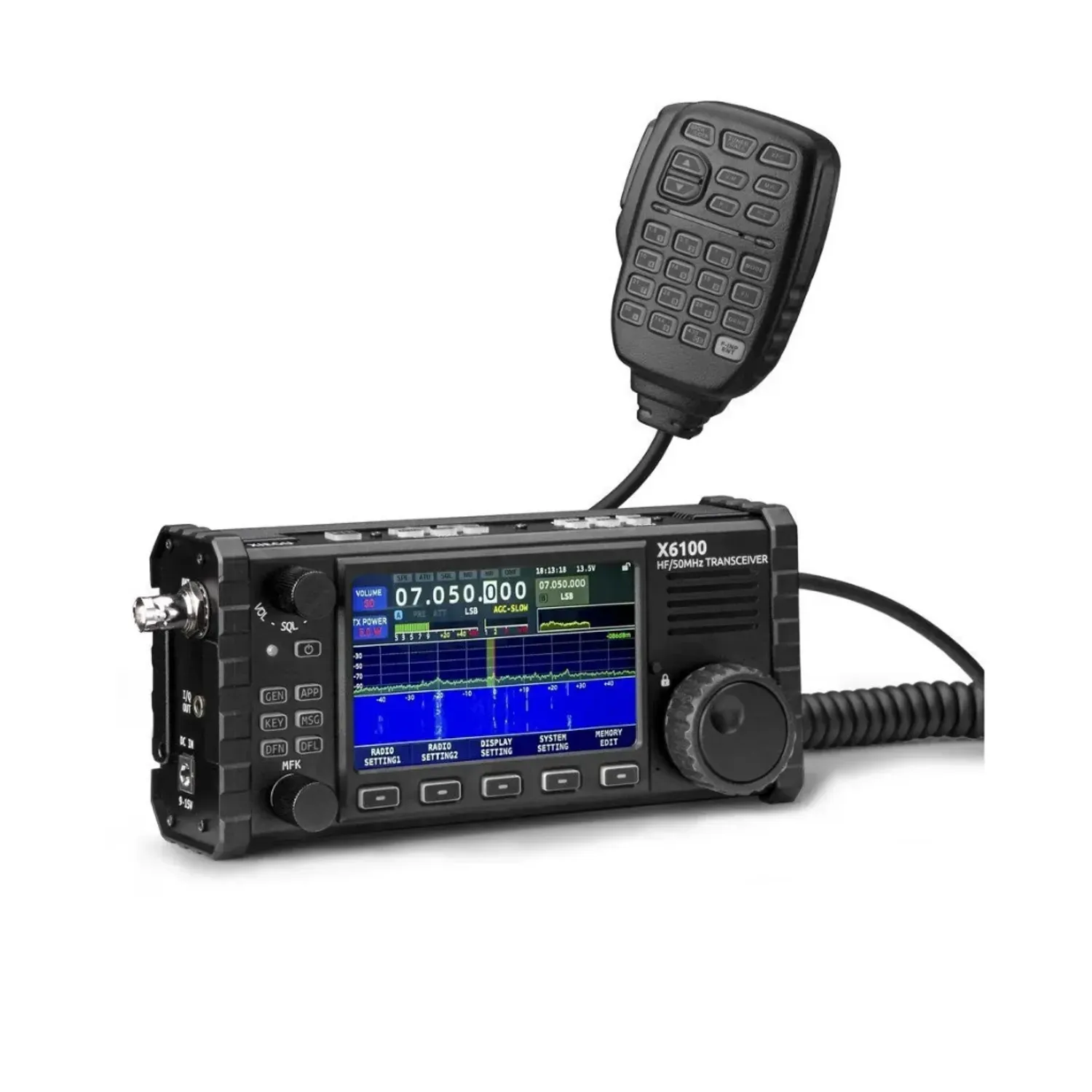
Send Inquiry
Comparing GMRS and Ham Radio: Which Option is Right for Me?
Understanding GMRS
Definition and Functionality
General Mobile Radio Service (GMRS) is a communication service that offers a middle-of-the-road option between simpler alternatives like CB radios and more complex systems like Ham Radio. It provides users with handheld radios that operate on specific frequencies allocated by the FCC.
GMRS Licensing Process
To operate a GMRS radio, users are required to obtain a license from the FCC. Unlike Ham Radio licenses, GMRS licenses do not require an exam but involve a straightforward application process with a nominal fee.
Key Features and Benefits
- Transmission and Reception Capabilities: GMRS radios offer varying power levels, allowing for effective communication over longer distances compared to simpler radio systems like FRS.
- Range and Terrain Considerations: With the ability to use repeater channels and larger antennas, GMRS radios excel in providing reliable communication in diverse terrains and environments.
- Practical Applications: From work environments to family activities, GMRS radios find utility in scenarios where clear and consistent communication is crucial.
Limitations of GMRS
- Restricted Frequency Bands: GMRS radios are limited to specific frequency bands, which may affect interoperability with other radio systems.
- Suitability for Business Models: While GMRS offers improved capabilities compared to simpler radio options, it may not always meet the communication needs of certain business models or industries.
This understanding of GMRS lays the groundwork for a comprehensive comparison with Ham Radio, allowing individuals to evaluate which option best suits their requirements.
Exploring Ham Radio

Definition and Scope
Ham Radio, also known as amateur radio, encompasses a wide range of radio communication activities conducted by licensed individuals. Unlike GMRS, which operates within specific frequency bands, Ham Radio users have access to a broader spectrum of frequencies for communication purposes.
Ham Radio Licensing Process
Obtaining a Ham Radio license involves passing an examination administered by the FCC. These licenses grant users access to various frequency bands and operating privileges, depending on the class of license obtained.
Advantages and Capabilities
- Flexibility and Long-Term Investment: Ham Radio offers individuals the flexibility to start with basic equipment and gradually expand their capabilities as their interests evolve. It represents a long-term investment in a hobby that can provide endless opportunities for learning and exploration.
- Global Communication Reach: With access to multiple frequency bands, Ham Radio operators can communicate with fellow enthusiasts around the world. This global reach enables connections that transcend geographical boundaries, fostering international cooperation and camaraderie within the amateur radio community.
- Role in Disaster Relief and Emergency Situations: Ham Radio plays a crucial role in providing communication support during emergencies and natural disasters. When traditional communication infrastructure fails, amateur radio operators step in to provide vital communication links for emergency responders and affected communities.
Considerations for Different Licensing Levels
- Technician Class: Entry-level license that grants users access to VHF and UHF frequencies, primarily for local communication. Ideal for individuals interested in getting started with amateur radio.
- General Class: Intermediate-level license that expands operating privileges to include HF bands, allowing for long-distance communication. Suitable for those seeking broader communication capabilities and international contacts.
- Amateur Extra Class: Advanced-level license that provides full access to all amateur radio privileges, including exclusive HF bands and satellite communication. Designed for enthusiasts looking to maximize their radio communication capabilities and engage in advanced technical activities.
Exploring the world of Ham Radio unveils a vast array of possibilities, from local conversations to global connections and involvement in emergency communication networks. By understanding the licensing process and the advantages associated with different license classes, individuals can make informed decisions about pursuing amateur radio as a hobby or a means of community service.
Comparing GMRS and Ham Radio
Key Differences in Functionality and Licensing
GMRS and Ham Radio differ significantly in terms of functionality and licensing requirements. While GMRS offers a simpler licensing process with no exam, Ham Radio licenses require passing an FCC examination. Additionally, Ham Radio provides access to a broader spectrum of frequencies compared to the restricted bands of GMRS.
Suitability for Different Use Cases
The suitability of GMRS and Ham Radio varies depending on the intended use cases. GMRS is well-suited for short-range communication in work environments and recreational activities where simplicity and ease of use are paramount. On the other hand, Ham Radio excels in providing long-range communication capabilities and is ideal for hobbyists interested in global connectivity and emergency communication support.
Cost-Benefit Analysis
When conducting a cost-benefit analysis, individuals must consider various factors, including initial equipment costs, licensing fees, and ongoing maintenance expenses. While GMRS may have lower upfront costs and simpler licensing requirements, Ham Radio offers greater versatility and long-term value, making it a worthwhile investment for enthusiasts seeking advanced communication capabilities.
Impact on Communication Needs
The choice between GMRS and Ham Radio can significantly impact an individual's communication needs in both the short-term and long-term. While GMRS provides a convenient solution for immediate communication requirements, Ham Radio offers greater flexibility and potential for growth over time. Therefore, individuals must evaluate their current and future communication needs to determine which option aligns best with their objectives and preferences.
By comparing the functionality, suitability, cost-benefit analysis, and impact on communication needs of GMRS and Ham Radio, individuals can make informed decisions that address their specific requirements and goals. Whether prioritizing simplicity, long-term investment, or global connectivity, choosing the right radio communication option can enhance both personal and professional communication experiences.
Making the Decision
Assessing Personal Needs and Preferences
Before making a decision between GMRS and Ham Radio, individuals should assess their personal needs and preferences. Consider factors such as communication range, frequency of use, technical proficiency, and desired features to determine which option aligns best with individual preferences.
Evaluating Potential Applications
Evaluate the potential applications of both GMRS and Ham Radio across various scenarios, including work, recreation, and emergency preparedness. Determine whether short-range communication for recreational activities suffices or if long-range communication capabilities and emergency support are essential requirements.
Weighing the Benefits and Limitations
Carefully weigh the benefits and limitations of each option to make an informed decision. Consider factors such as licensing requirements, equipment costs, range limitations, interoperability with other radio systems, and long-term investment potential to determine the overall suitability of GMRS and Ham Radio for individual needs.
Considering Future Growth and Development
Take into account the potential for future growth and development in radio communication when making a decision. Recognize that while GMRS may offer simplicity and immediate utility, Ham Radio provides greater flexibility for expansion and participation in advanced communication activities. Consider how evolving interests and needs may influence the choice between GMRS and Ham Radio in the long run.
Conclusion
When considering the choice between GMRS and Ham Radio, it's essential to evaluate your communication needs, preferences, and long-term goals. While GMRS offers simplicity and immediate utility, Ham Radio provides unmatched versatility, global connectivity, and potential for growth in the amateur radio community.
For those seeking a comprehensive communication solution with the ability to connect with fellow enthusiasts worldwide and provide support during emergencies, Ruixue's Ham Radio is the ideal choice. With a range of form factors including portable, handheld, and base station units, Ruixue offers customization options to tailor the radio to specific user requirements. Whether for recreational activities, professional use, or emergency preparedness, Ruixue's Ham Radio stands out as a versatile and reliable option for radio enthusiasts of all levels.

